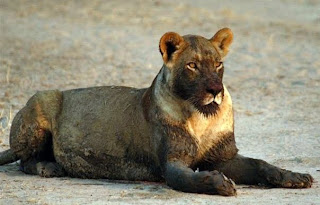




I had another unique adventure with Mark Tennant the other day (www.animalsartsandancestors.com). I went to meet the original Mrs Ples. Her remarkably intact skull now resides in a velvet cased box inside the Transvaal Museum. What a wonderful visit if a rather large step back in time!
But let’s go back a sec…who’s Mrs Ples and what’s the big deal?
At the helm of early evolutionary studies in South Africa were the likes of passionate palaeoanthropologists such as Professor Raymond Dart and Dr Robert Broom. Dart’s contentious publications were the first to propose that there was in fact a hereditary link between the ape and human. This supposition was strongly supported by Broom’s discovery of a new hominin fossil in the Sterkfontein Caves in the form of Mrs Ples - the media shortening for Plesianthropus africanus (later changed to Austrolopithecus africanus). The discovery of Mrs Ples ultimately opened the world up to the realisation that not all early hominids are direct ancestors of modern man. These men’s work was foundational in the world recognising that Gauteng’s Cradle of Humankind was paramount in the understanding of human ancestry having produced thousands of hominin fragments, hundreds of thousands of animal fossil fragments and ten thousand stone tools that cover 3 major stone-cultures. Sterkfontein is the longest ongoing excavation in the world having been dug continuously for three decades and intermittently for the previous three.
Mark took me to The Cradle a while back and it blew my mind.
The part of Gauteng that has come to be known as the Cradle of Humankind is a world-renowned heritage site due to the fact that 35% of the world’s hominin fossils have been discovered here in 12 individual sites and is characterised by 2.8 billion year old rocks. The granite, some of the most ancient rock on the planet, protects an expansive network of underground caverns amongst softer dolomite and these preserve the clues of a 3.5 million year old story.
The Cradle’s undulating grasslands with their moist valleys and wooded slopes have been ideal for hominin habitation for millennia (the period when most human evolution occurred is called the plio-pleistocene) in spite of interruptions such as climate variations and the presence of inland seas. It seems the original human-like apes at 1.3m tall first roamed here about 3 million years ago. They lived in small social groups and dodged sabre-toothed cats and prehistoric hunting hyenas. Australopithecus africanus is thought to have been the original ancestor of the Homo genus which appeared when a series of hot and cold cycles created a window for speciation about 2 million years ago.
Human evolution is complicated because it branches and is not as linear as originally thought. It seems some of the original Australopithecus africana gene line took on the traits of a more robust ape-man with a flatter face and larger teeth while another evolved into Homo habilis which had a larger brain and more carnivorous diet (and thus different lifestyle skills in terms of hunting rather than gathering) than the Australopithecines.
The clues tell us that by 1.5 million years ago Homo erectus was beginning to displace H.habilis probably due to his new found ability to tame fire for warmth and protection, flames being transported from natural sources like lightning-induced veld fires. Fireplaces in the Forum Homini rooms remind guests of this critical turning point in our evolution. Remarkably, this same tool harnessed for simple tasks such as cooking food, would eventually take mankind to the moon! From this point, humans developed quickly.
The Homo genus had a mental capacity and social organization much more advanced than his predecessors and it appears dispersed northwards to colonise Asia and then Europe. Those that remained in southern Africa developed into archaic Homo sapiens 800-200 thousand years ago. These individuals excelled in communication and language began to develop as well as expression through art and the crafting of jewellery, weapons and more advanced tools. Many controversies exist around the evolution of man and scientists have limited (not to mention petrified) evidence to work with to prove or disprove their theories.
Standing in the cool, dark space under the earth is quite unnerving. Not because its particularly claustrophobic but rather because standing there is like being inside a sacred grave site. Some of the earliest forms of life, prehistoric blue-green algae’s (known as stromatolites) have been found here. Nature’s embellished, arching ceiling and the tranquil underground lake are tomb-adornments fit for kings. The most intact australopithecine ever found is still being meticulously extracted from the rock in this cave. ‘Little Foot’s’ foot bones were found in a bag containing discarded lime-mining debris blasted some 65 years previously and painstakingly matched to the rest of the skeleton where it had come to rest, his skull resting on an outstretched arm, after falling down a vertical shaft 4 million years previously.















































